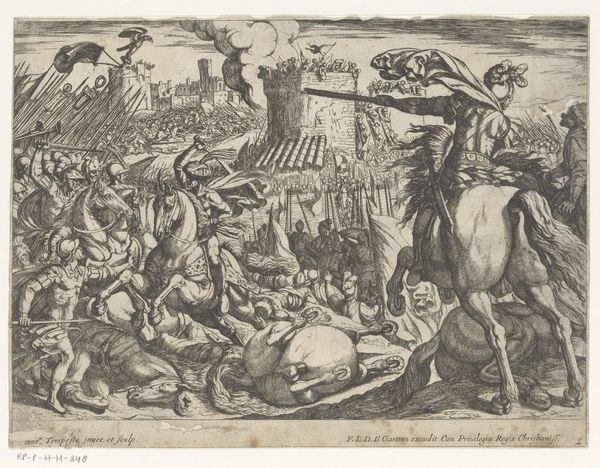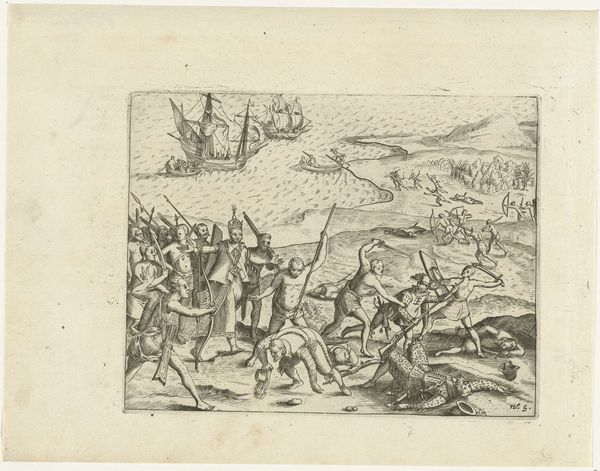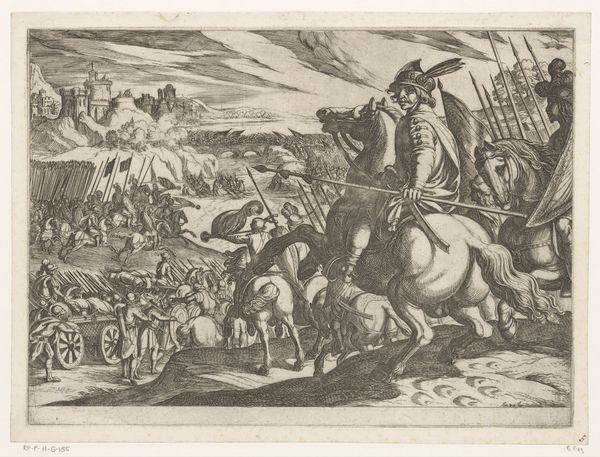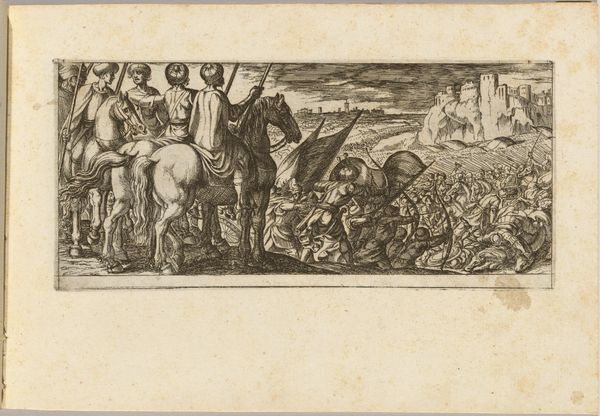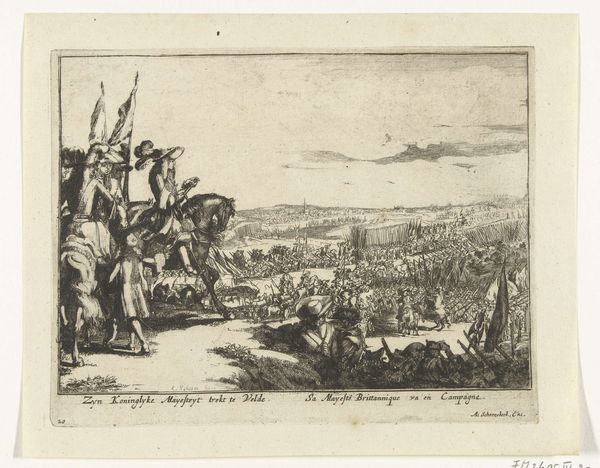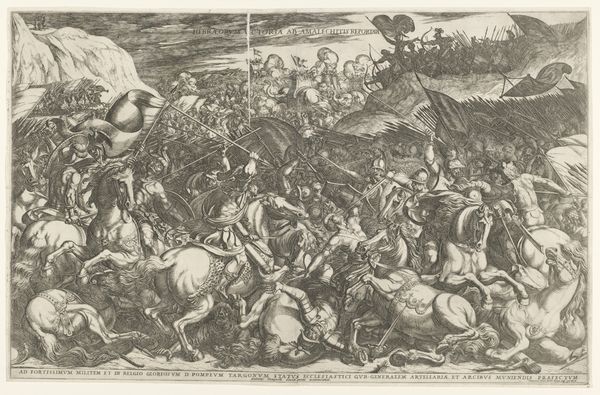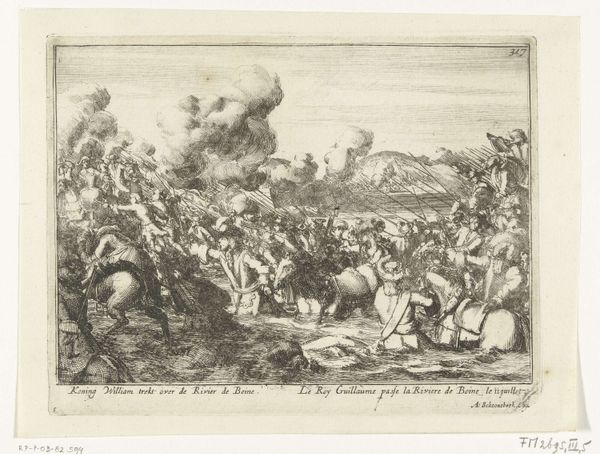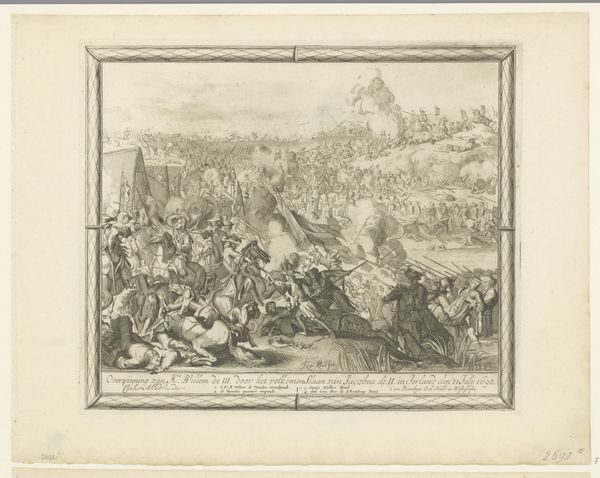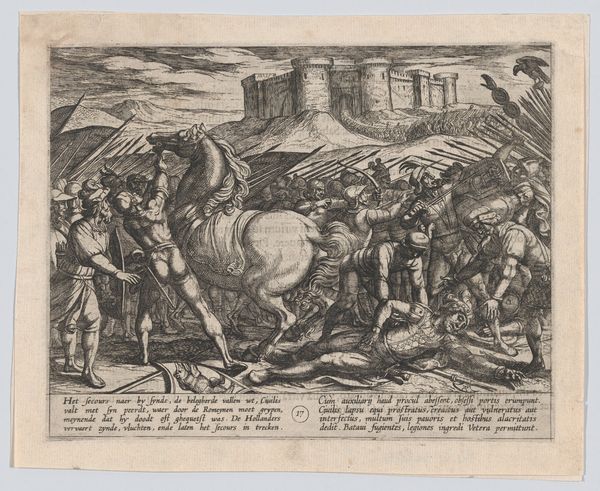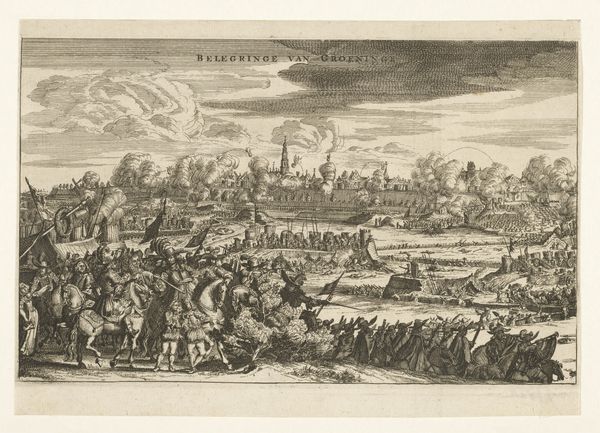
print, etching, engraving
#
narrative-art
# print
#
etching
#
landscape
#
mannerism
#
figuration
#
line
#
history-painting
#
italian-renaissance
#
engraving
Dimensions: height 96 mm, width 270 mm
Copyright: Rijks Museum: Open Domain
Editor: This print, "Twee legers elkaar aanvallend" or "Two Armies Attacking Each Other," by Antonio Tempesta, dates back to 1599. The density of the lines depicting the clashing armies is incredibly striking. What are your initial observations of this piece? Curator: My focus immediately gravitates towards the use of line. Observe how Tempesta employs variations in line weight and density to construct both the form and the overall dramatic effect. Consider the contrast between the controlled, almost regimented lines that define the ranks of soldiers versus the more chaotic, explosive lines representing the conflict itself. How do you think this contrast functions within the overall composition? Editor: It creates a powerful sense of order disrupted by violence, almost like a well-organized machine suddenly malfunctioning. The foreground figures are more defined, too, drawing my eye into the chaos of the battle in the distance. Curator: Precisely. And note how Tempesta guides the viewer’s eye through the scene not just through linear perspective, but also through this modulation of detail. The carefully delineated foreground figures serve as anchors, while the background becomes increasingly abstract, a blur of etched lines. Does the flattening effect serve a compositional purpose for you? Editor: It does make the battlefield seem vast and limitless, compressing the space while simultaneously suggesting its immensity. Also, I wonder what stories these forms can represent, almost archetypes of chaos. Curator: Yes, the overall flattening emphasizes the universality, it transcends one particular narrative, becoming emblematic of conflict itself. Are you also seeing how the landscape recedes to create a compositionally balanced panoramic spectacle? Editor: Absolutely. It’s fascinating how much depth and energy he achieves through purely linear means, using patterns to almost simulate explosions. Curator: And the interplay between the solid forms of the soldiers and the more atmospheric rendering of the landscape creates a dynamic tension. A masterclass of line and form at play, wouldn't you agree? Editor: Yes, I am struck by Tempesta’s capacity to create narrative power using purely formal structures, how that interplay drives my understanding and appreciation of the historical content of the print. Thanks so much for that perspective!
Comments
No comments
Be the first to comment and join the conversation on the ultimate creative platform.

